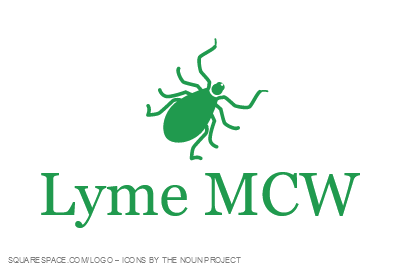Transmission
Although transmission primarily occurs through the bite of an infected tick, anaplasmosis can also be acquired through alternate exposure. For example, one study found that the child of a pregnant woman who was infected with A. phagocytophilum had developed anaplasmosis 8 days after being born, which was evidence for transplacental transmission (Horowitz et al. 1998). Another study found that several butchers from northwestern Wisconsin acquired anaplasmosis after butchering large quantities of white tail deer during hunting season. None of the butchers had noted a preceding tick bite, raising the question of whether they acquired infection by direct exposure to infected deer blood through skin cuts, through inhalation of aerosolized blood, or through infected blood splashed directly on mucous membranes (Bakken et al. 1996). Additionally, A. phagocytophilum remains viable and infectious in refrigerated stored blood for up to 18 days. In fact, a study of 992 blood donors from Connecticut and Wisconsin demonstrated that 0.4-0.9% of blood donors had A. phagocytophilum antibodies (Leiby et al. 2002). Unfortunately, there is no requirement in the U.S. to screen blood products for A. phagocytophilum infection, and at least 8 cases of anaplasmosis acquired through transfusions of infected blood products have been reported since 2007 (Townsend et al. 2014).
Diagnosis
The major issue with anaplasmosis is that early signs and symptoms are nonspecific, often mimicking a viral illness, and rapid, sensitive tests for diagnosis in early infection are not widely available. Therefore, it is difficult to arrive at a specific diagnosis early in the course of the illness when antibiotic therapy is most likely to be successful. Additionally, Ixodes ticks can often be co-infected because they serve as competent vectors for multiple pathogens that can infect humans, including Lyme disease, babesiosis, ehrlichiosis, and Powassan virus. Therefore, sequential or simultaneous infections caused by multiple pathogens could occur after one or multiple tick bites. Physicians who diagnose and treat patients with anaplasmosis must always consider the possibility of co-infection with other tick-borne agents.
Treatment
While many patients with competent immune systems resolve their illnesses spontaneously even without antibiotic treatment, most symptomatic patients benefit from specific antibiotic therapy, especially with doxycycline. Doxycycline therapy leads to clinical improvement in 24-48 hours. Thus, patients who do not respond to treatment within this time frame should be reevaluated for alternative diagnoses and treatment, including co-infection with babesiosis. Chronic infection due to A. phagocytophilum has not been described in humans.
Sources
Bakken and Dumler, 2015. (“Human Granulocytic Anaplasmosis”): https://www.ncbi.nlm.nih.gov/pmc/articles/PMC4441757/?report=classic
Horowitz et al. 1998. (“Perinatal Transmission of the Agent of Human Granulocytic Ehrlichiosis”): https://www.nejm.org/doi/full/10.1056/NEJM199808063390604
Bakken et al. 1996. (“Exposure to Deer Blood May Be a Cause of Human Granulocytic Ehrlichiosis”): https://academic.oup.com/cid/article/23/1/198/592538
Leiby et al. 2002. (“Relationship between tick bites and the seroprevalence of Babesia microti and Anaplasma phagocytophila in blood donors”): https://onlinelibrary.wiley.com/doi/full/10.1046/j.1537-2995.2002.00251.x
Townsend et al. 2014. (“Probable transfusion‐transmission of Anaplasma phagocytophilum by leukoreduced platelets”): https://onlinelibrary.wiley.com/doi/full/10.1111/trf.12675
